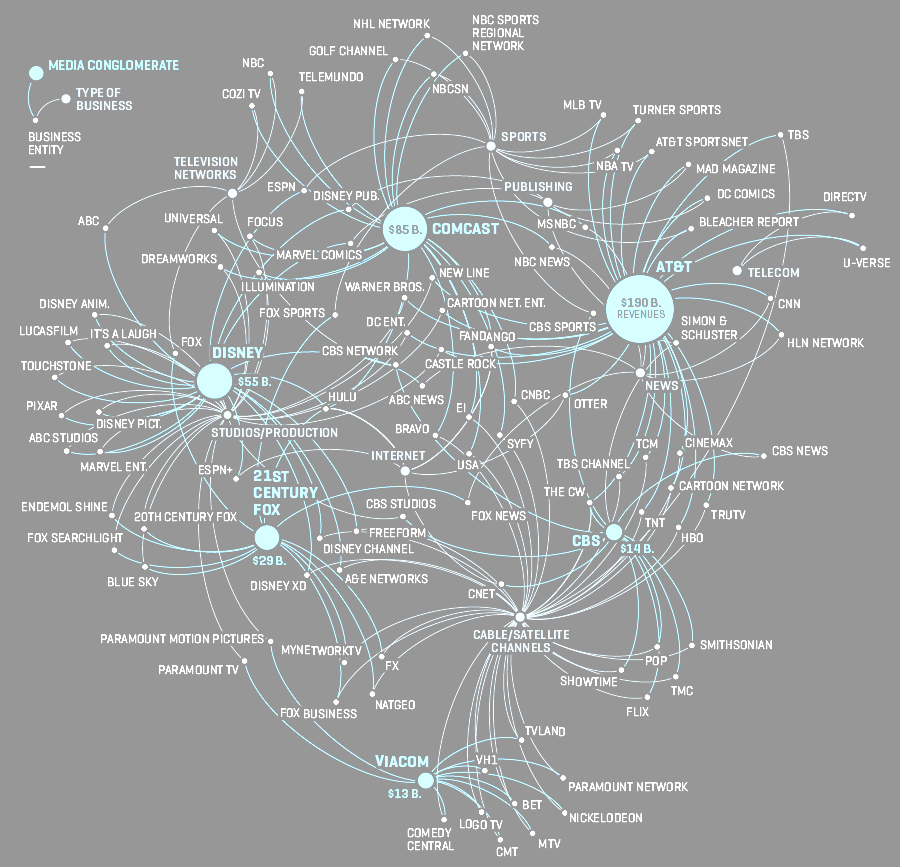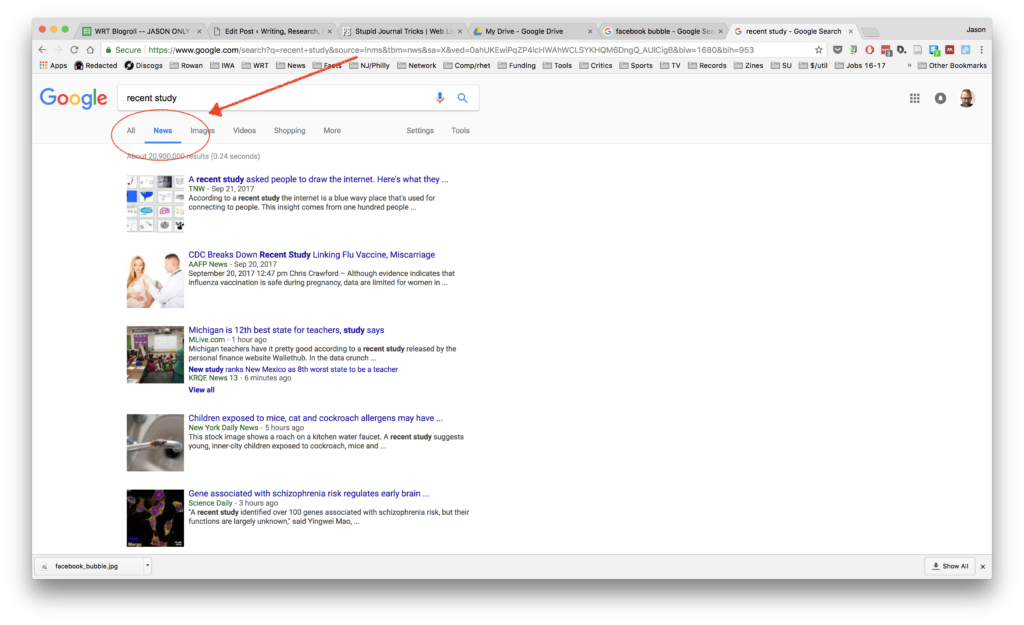Most studies are data points–emerging evidence that lends weight to one conclusion or another but does not resolve questions definitively. What we want as a fact-checker is not data points, but the broad consensus of experts. And the broad consensus of experts is rare.
Mike Caulfield, Chapter 20
Front matter
- Week at a glance, including our conference schedule .
- One-to-one v group conferences — preferences for Unit 2?
- Breakfast meeting on Wednesday?
- Freewrite: one thing about writing you’ve learned so far + one goal moving forward
Recent studies suggest…
Activity: For your 4th and final fact-check, I am asking you to go upstream and read laterally on a news report that cites a recent study. There are a number of news stories to choose from in the headlines.
Let’s look at this one, about cell phones causing humans to grow horns, and practice the moves we’ve learned. These include:
1. Looking at previous work via fact-checking sites and Wikipedia.
2. Going upstream on the study.
3. Reading laterally about the original source (Fox4Now) and the source of the study itself, Scientific Reports.
Often you are not in a position to critically read original scholarly research because it takes many years to develop the knowledge and literacies required to become an expert. That’s one of the reasons you are in college. This expertise can be observed if you try to pick up a journal from any given field. What makes these journals really credible, however, is the process of peer review.
Yet, for all of the credibility peer-reviewed journals muster, sometimes these journals are not even immune to the effects of filter bubbles or the spread of misinformation. Consider the article, “The Case for Colonialism,” which was published in Third World Quarterly in 2017, which argued that our racist, oppressive moments in world history were overall beneficial to humans, or the “Grievance Studies” hoax that was widely reported on in the news in October 2018, which infiltrated identity-based scholarship in the humanities and social sciences.
If you do some quick searching to find out about how this was received by the wider academic community, you’ll find some interesting results about these journals and the authors. Although these are a rare cases, they do explain why is it important — for all researchers — to check previous work, go upstream, and read laterally.
Activity: Now search “recent study” in Google News and choose one of the studies to fact-check. Once you go upstream on the study, follow Caulfield’s advice and read laterally by googling the journal’s impact factor (Ch 21) and checking Google Scholar for author citations (Ch 22). What do you find? How can you find consensus on this issue (Ch 23-24)?
Homework for Tuesday’s conferences
Use FC#4 to go upstream and read laterally on a news report that cites a recent study. You can continue with the one we started in class or choose a new search. Once you find a news story that cites a study or piece of scholarship, go upstream to find that original study. [Note: You may have to log in to Cornell’s library to access some of these.]
Even if you cannot find the actual study, use the strategies from the chapters above to check the credibility of the journal and the expertise of the author(s). If you get stuck on one strategy, discuss it in your post, but move to another. Not all journals will have an impact factor and not all authors can be easily found in Google Scholar, but you should seek both. Ultimately your goal is to use these search strategies to “accurately summarize the state of research and the consensus of experts in a given area, taking into account majority and significant minority views.”
Homework for Wednesday
- Revise FC#4 & post to WP;
- Read & add marginal annotations to Dana Cloud’s “Pants On Fire! On the Rhetoric of Fact-Checking in U.S. Political Culture”


